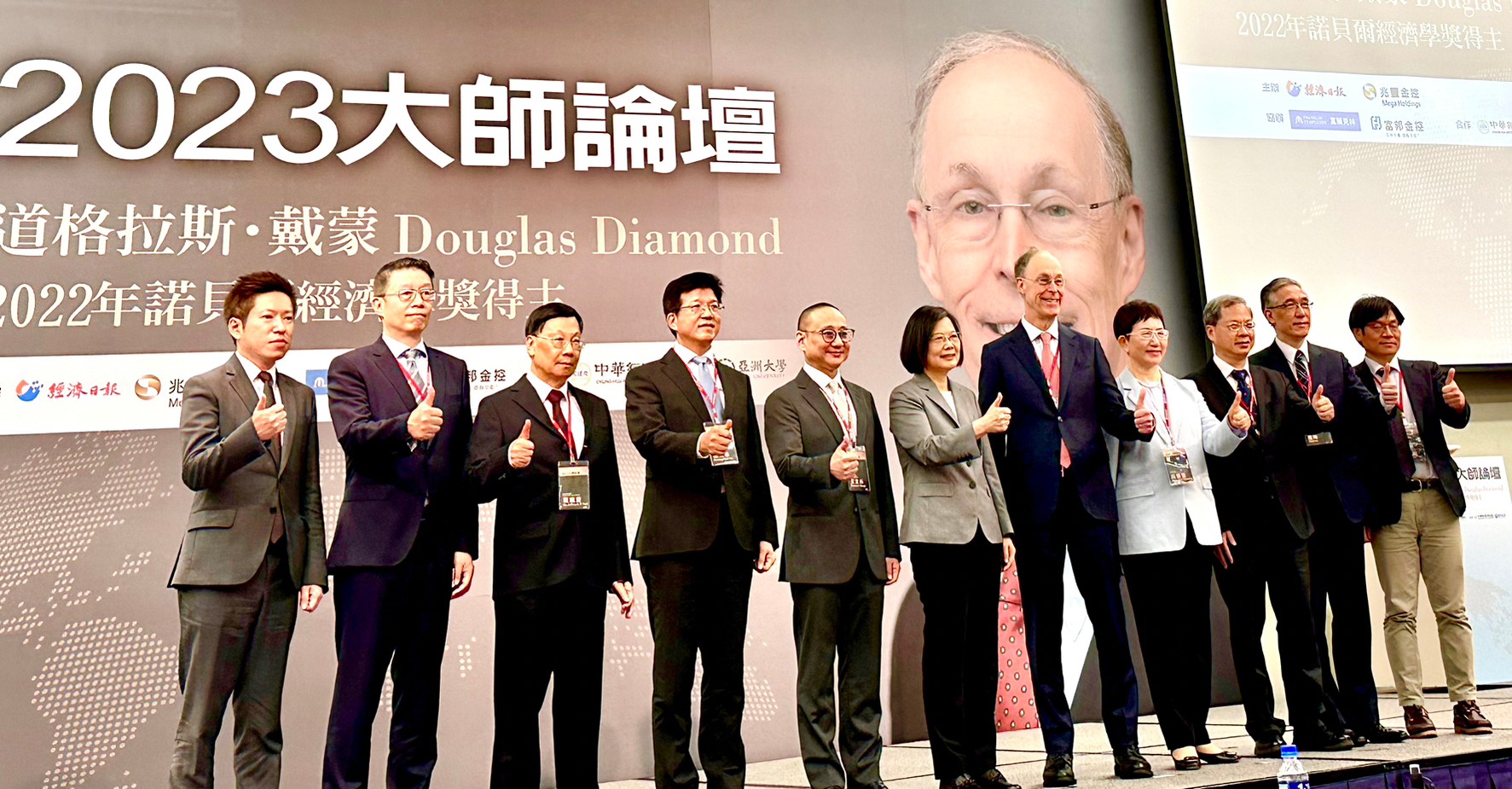Professor Diamond encourages students: Don't panic because of new technologies; they represent breakthroughs in technology, but ultimately, they present challenges in society and the economy!
Douglas Diamond, the recipient of the 2022 Nobel Prize in Economics and professor at the University of Chicago, held a discussion with Asia University students on the June 1st. At the beginning of the session, Professor Diamond expressed his delight in seeing so many young students interested in economic issues, and he hoped that the discussion would inspire the students. Professor Diamond encouraged the students not to be fearful of new technologies, as they represent technological advancements. The ultimate impact of these technologies lies in the challenges they pose to society and the economy, and that is where we need to focus our learning. The key is to unleash one's own value and drive social progress through innovation.
President Tsai stated that it was the worst of times, it was the best of times, emphasizing that crises can also be opportunities. By mastering cutting-edge generative technologies such as ChatGPT, AI, robots, the Internet of Things, blockchain, and metaverse, and by emphasizing AI transformation and sustainable transformation, we can enhance efficiency, competitiveness, and resilience in dealing with crises.
In addition to local students, Asia University also has foreign students from the United States, Italy, Russia, Mongolia, Southeast Asia, and outstanding students from high schools such as National Changhua Girls' Senior High School, Washington High School, Lizen High School, Shinmin High School, and Chiao Tai High School. The discussion covered topics such as financial intermediation, liquidity risk in financial institutions, banks and financial crises, financial technology, inflation, and de-dollarization. Zi-Ting Gao, a student from the Department of Foreign Languages at Asia University, asked whether the trend of de-dollarization is desirable. Professor Diamond explained that countries promoting de-dollarization, such as Singapore and China, are concerned about the adverse consequences resulting from the use of the U.S. dollar as a means of imposing sanctions on Russia after the outbreak of the Russo-Ukrainian war. Many countries have begun to worry that conducting trade in U.S. dollars would make them vulnerable, and the rapid increase or decrease in the value of the U.S. dollar would also affect financial stability in various countries. However, Professor Diamond believes that the U.S. dollar is still the strongest global currency and will continue to dominate in the foreseeable future, so it is unlikely to be shaken by "de-dollarization" movements.
Hsin-Yu Tsai, a first-year student from National Changhua Girls' Senior High School, is the youngest among the students. Due to her intensive training at Asia University and her passion for English, she confidently asked Professor Professor Diamond about the recent bank collapses in Silicon Valley and Bear Stearns, which occurred in March. She inquired whether there would be more financial panics. Professor Diamond analyzed that the banks' assets were not evaluated based on market value fluctuations, leading to "speculative short-term trading" and manipulation by senior executives. Preventive refinancing methods should be designed, such as reinsurance. When a bank has strong clearing capabilities, it should set aside a portion of its funds for convertible bonds. Being able to quickly mobilize and provide timely protection for customers ensures a continuous inflow of funds for the bank. The students at Asia University expressed that they gained fruitful insights and considered the experience to be invaluable. Marcello Medina, an Italian student in the fourth year of the Department of Finance at Asia University, inquired about the insurance ratio for bank deposits. Professor Diamond replied that there are many considerations regarding different ratios, as indicated by relevant research. Perhaps a range of 60% to 70% could be feasible, but it is not the only standard answer. Sonika Dabral, an Indian student in the first year of the Master's program in the Department of Business Administration at Asia University, asked about the additional factors that would influence bank runs if the Diamond-Dybvig model proposed by Professor Diamond many years ago were applied in the present context. Professor Diamond replied that the model is practical and straightforward. Over the years, there have been attempts to develop more comprehensive but complex papers. For example, there are papers that discuss the relationship with bank employees or social connections and how they influence deposit behavior. Those interested can refer to such papers. Si-Qi Chen, a third year student of the Department of Finance at Asia University, asked whether the US dollar interest rates would remain high. Professor Diamond believes that the current increase in interest rates is primarily aimed at cooling the market and curbing inflation. As for whether the US Federal Reserve will continue to adopt a policy of raising interest rates, this part is difficult to predict. Professor Diamond said, "Our goal is to reduce inflation, and tightening monetary policy may be one important tool. However, people's expectations and demand for money can also lead to inflationary pressures. Relying solely on the Fed to raise interest rates to control inflation may not always be a good policy in the future. It can lead to a period of high inflation and high interest rates, severely impacting consumption and investment. Therefore, when making policy adjustments, the overall economic environment and its related impact factors must be thoroughly considered in order to achieve the desired effects of the new policy." |




(2).jpg)
